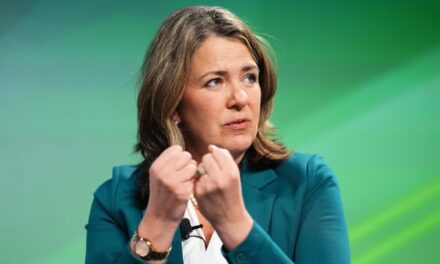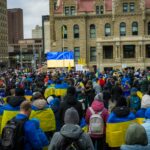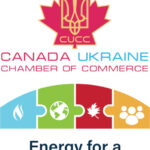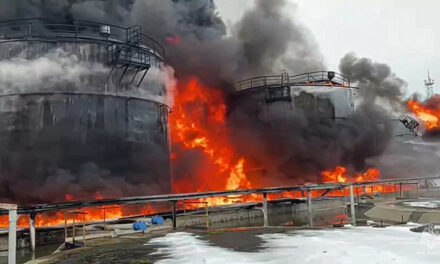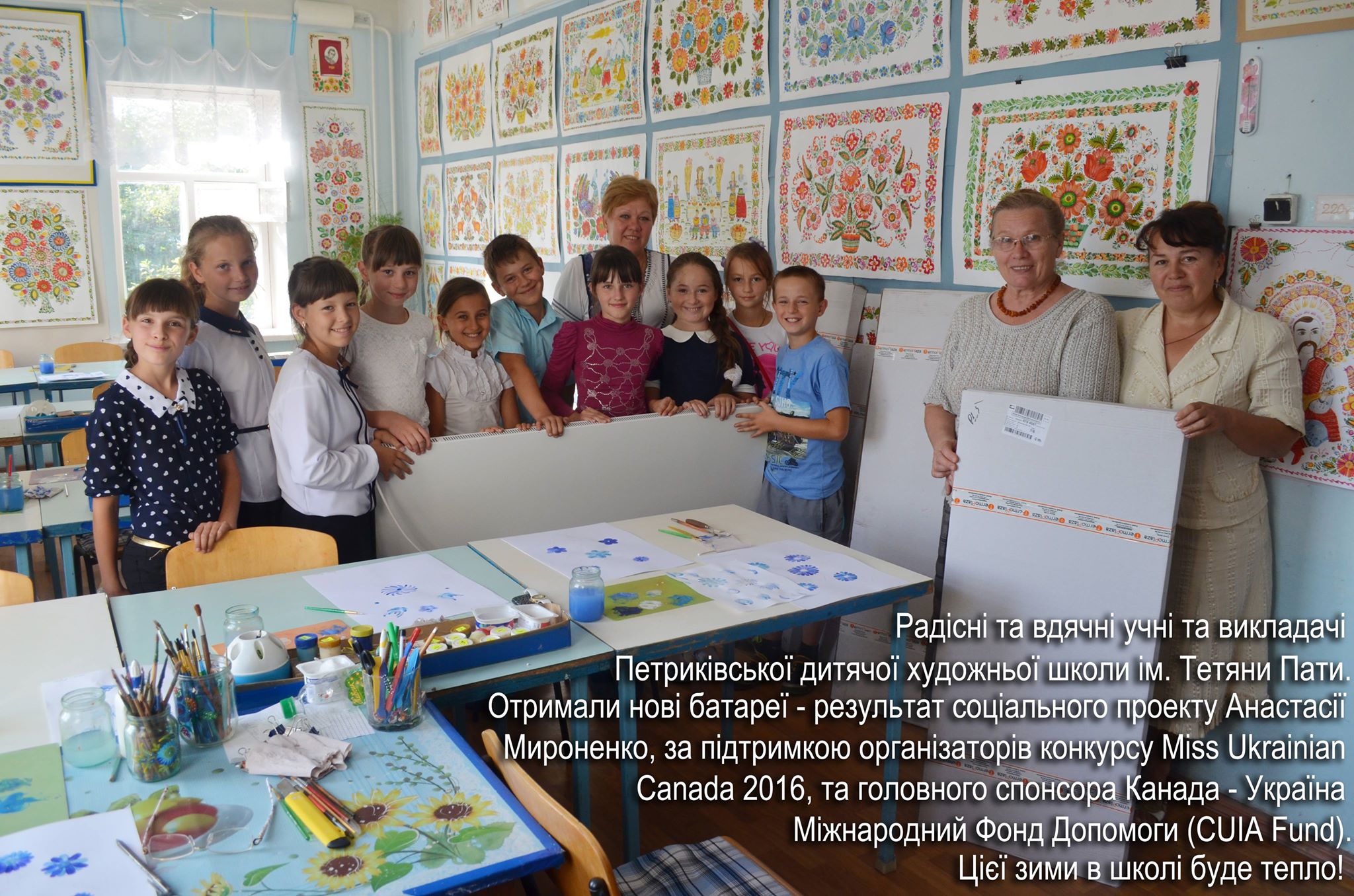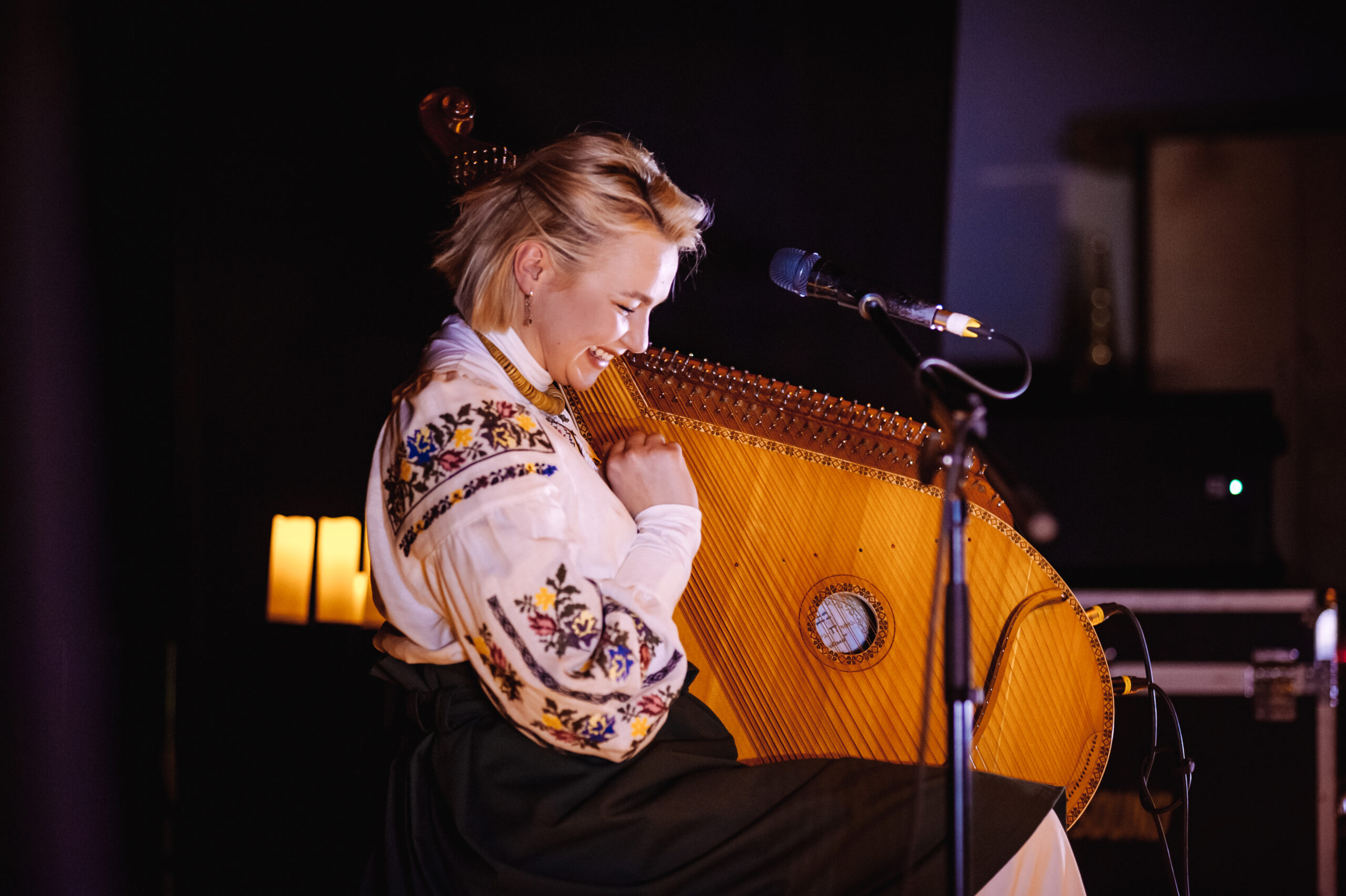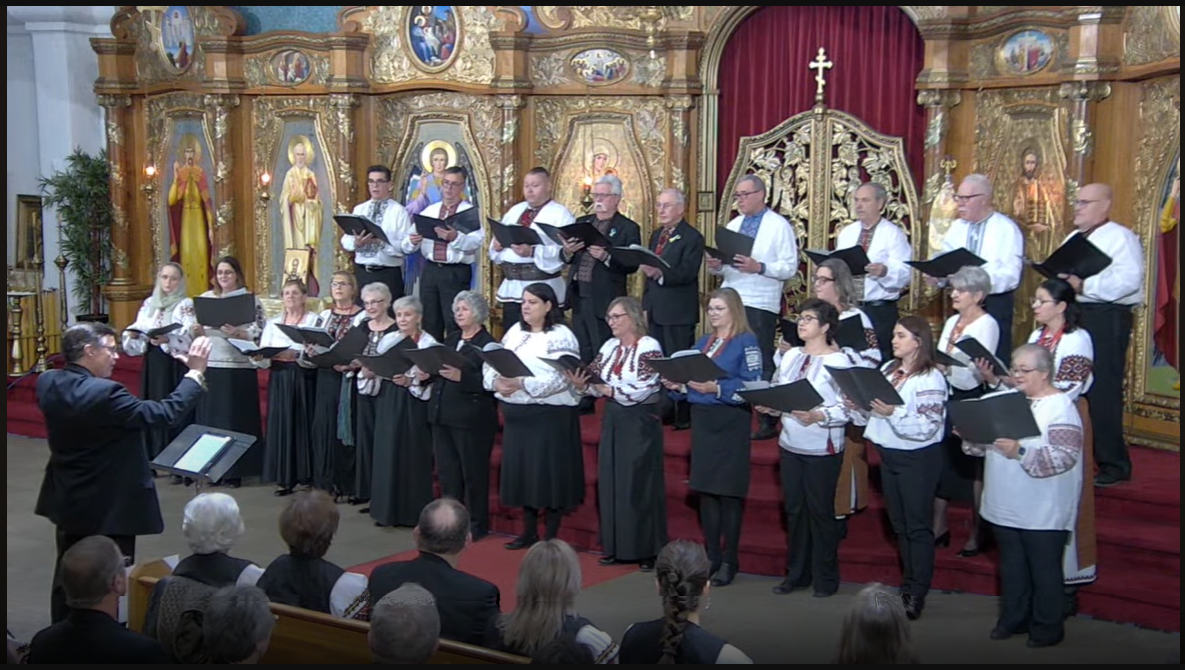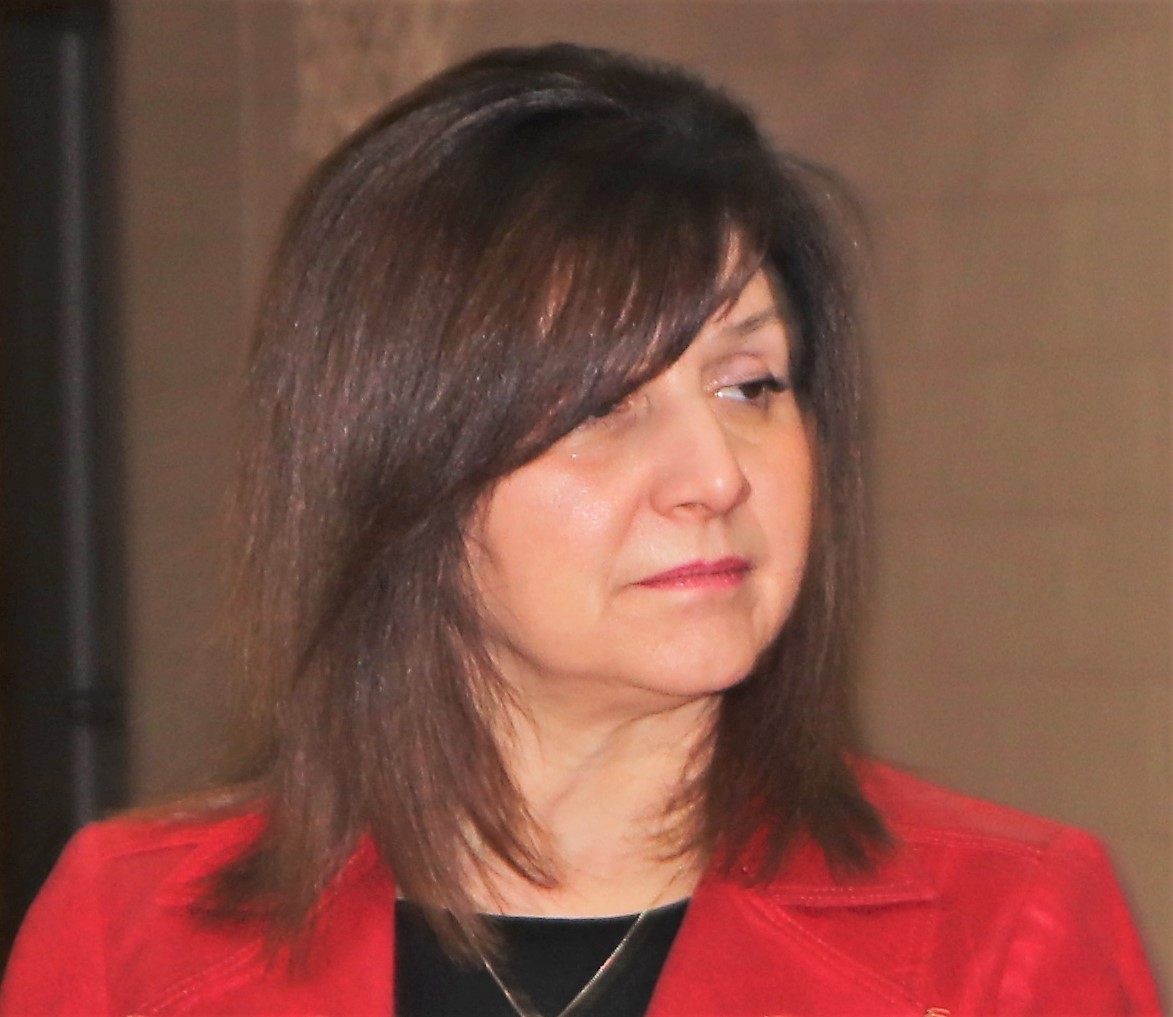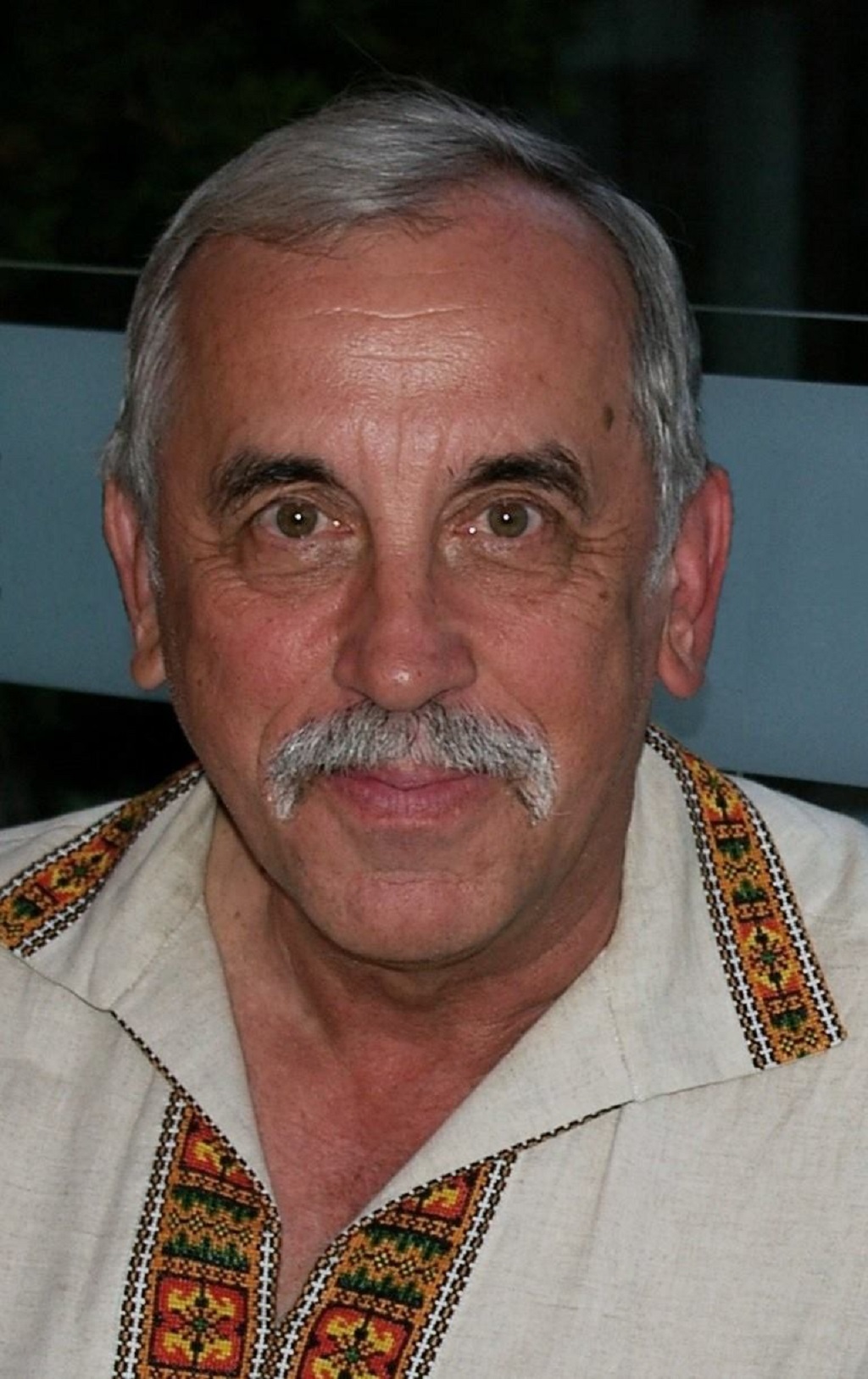Yuri Bilinsky, New Pathway – Ukrainian News.
She grew up in a special family. Her parents are artists who devoted all their lives to authentic Ukrainian art, including the Petrykivka painting. As Oksana Pikush recalls, her family did not discuss the need to speak Ukrainian or to support Ukrainian traditions. This was absolutely natural for Pikushes considering the environment in which the family lived – the village Petrykivka in the Dnipropetrovsk region. Oksana’s father, Andriy Andriyovych Pikush, – is a People’s Artist of Ukraine, Honored Master of Folk Art, Laureate of the Kateryna Bilokur Prize. But at the same time – a very modest person who never chased money or fame, says Oksana. Oksana Pikush considers her father an exceptional person, but not because he is her father: “There are many talented people in the Ukrainian cultural community, but people who sacrificially, without waiting for any praise or reward, give everything they have for the development of culture, are very rare”. Oksana deems it her mission to continue her parents’ work and expose the Petrykivka painting globally without losing its authenticity. Her last project was the “Lyshtva” painting in the Cardinal Joseph Slipyj Catholic school in Toronto.
Our conversation with Oksana was about the history, the present and the future of the Petrykivka painting tradition, and about Ukrainian folk culture in general. The Petrykivka painting, which dates back to pre-Christian times, was added to List of the Intangible Cultural Heritage of Humanity by UNESCO. Now it is probably the most famous part of Ukrainian folk art. But the fact that the tradition of painting the premises, wooden and glass articles existed across Ukraine, while nowadays only Petrykivka is known widely, suggests that the process of extinction of the Ukrainian folk culture began long ago. Oksana kicked off the conversation about how to preserve and develop this popular culture with the peculiarities of Petrykivka painting, which are hiding from the public eye:
Oksana Pikush: Petrykivka painting is not just flowers and birds, it’s a philosophy of freedom and individuality. And this is what is lost today. When I was a seven-year-old child, my father took my hand and brought me into a painted house, and I was just shocked, I understood the meaning of the word “paradise”. When you cross the doorstep of a house and see the colors around you, this is a huge positivity, the colors are connected in such a way that some kind of music starts to play in your heart, unusual, beautiful, optimistic. Many people are now creating things in “Petrykivka style”, but in many cases only the shell is left. Those who can hold brushes, come to the annual festival “Petrykivsky miracle”, take photos, start copying, without any regard to what those flowers mean, why this artist painted exactly these flowers, why he or she picked exactly these colors, or created this composition. I consider one of my missions to inform people that there are two Petrykivkas today: there is the authentic one and there is a “foam”.
NP-UN: What is the secret of Petrykivka painting?
Oksana Pikush: The old masters had their own styles. They knew the works of their predecessors, but then found themselves, their own composition, their combination of colors. If you look at the paintings by Vasyl Sokolenko (my father’s teacher), who unfortunately passed away this year at the age of 96, you will see that it is Sokolenko, this can not be either Tymchenko or Pata. This is his hand, his vision of the world – there is some kind of a powerful flower, and from it grows a thin whisker, and from the whisker falls a spark, as if from the soul. But you can’t distinguish the work of many modern “Petrykivka masters” from one another. Another feature of Petrykivka’s painting is respect for the surrounding world. The artist would not put him- or herself above the nature, they recognized that plants, flowers and animals were an integral part of life, and if something was out of balance, everything else was too. Many contemporary authors, who have not studied this tradition deeply, do not understand the value of air that should exist between the elements, and too often their compositions are too dense.
NP-UN: Who is now continuing the true tradition of Petrykivka?
Oksana Pikush: The Petrykivka tradition had very hard times before and after the Second World War. The first educational institution that would teach the Petrykivka painting was created in 1936 by Oleksandr Statyva, and he was oppressed for this, he was sent to Siberia. Another organizer, Tetiana Pata, my father’s relative, was fortunate enough to avoid persecution. Now there is the Centre of Folk Art “Petrykivka” in the village, which was created in 1991 at my father’s initiative. Such Petrykivka masters as Volodymyr Hlushchenko, Nina Turchyn, Natalia Rybak, Nina Borodina, Valentyna Karpets, Tetyana Shyshatska, Natalia Borodina, sisters Tetyana and Lina Sklyar, and my mother Maria Pikush have supported the Centre. Later this Centre accepted the masters from the Druzhba factory and Experimental workshop. These two enterprises did not survive the harsh 1990s. Nowadays the Centre unites the most powerful group of Petrykivka artists and leads the continuation of Petrykivka tradition from the old masters. There is a group of elders, Honored Masters of the Folk Art, members of the National Union of Ukrainian Artists, but there are many young masters, at least half of them. There is also a School of art named after Tetyana Pata with about 70 students. My mother managed it for more than 20 years and is till teaching there. This school is really good, the teachers are educated artists and students have won prizes at many exhibitions.
NP-UN: So, despite the current Ukrainian realities, Petrykivka painting’s future looks assured.
Oksana Pikush: It’s not that simple. The problem is low pay of teachers and the complete absence of funding for the technical needs, materials, and so on. My parents have been taking care of the school for several decades and it would not survive without the help of sponsors. For example, the winter of 2015-16 was particularly brutal, the children had to study in their winter coats, and if we had not found the money for the heating, the school would not have worked next winter. In the summer of 2016, Miss Ukrainian Canada hosted a competition in Toronto. It turned out that one of the participants, Anastasia Myronenko, is my fellow from Dnipro. At the contest, she presented the school as a social project and won 1000 CAD for it. For this money, we bought electric heaters, which were installed at the school in 2016. After that, Anastasia collected 800 dollars the auction organized by the CUIA Fund, and we bought the easels for students for this money. I would very much like this year to raise funds to make an indoor washroom in the school’s premises and to provide an emergency exit. The students and teachers now have to walk to a neighboring house to go to the washroom.
NP-UN: What was the Petrykivka painting like 100 or 200 years ago?
Oksana Pikush: Petrykivka painting was primarily a wall painting. The clay huts on Easter were painted around the windows, above the door, inside and outside, the strip was called the “runner”, which had no beginning or end and symbolized infinity. They painted a tree of life on the stove – a bouquet of flowers, as a flower is the apogee of nature’s beauty. A cock is a symbol of awakening when the sun rises, but it is also an awakening of the soul, which is now associated with the renaissance of Ukrainian culture and statehood. The image of kalyna – health, maiden beauty, purity. The all-seeing eye which is actually the image of God. Also, the furniture was decorated: chests, tableware, children’s toys. Later, when paper became more common, people began to draw on paper. Not everybody was a painter in Petrykivka, but everyone wanted their hut painted before the holidays.
NP-UN: Have any old paintings been preserved?
Oksana Pikush: To date, museums have originals on paper, the oldest date to 1930’s. Authentic painted clay walls could not be preserved, all we have left is their photos. Historian Dmytro Yavornytskyi was the first to collect Petrykivka paintings, the first photos were made at his request in the late 19th century. There are chests in the museum in Petrykivka, which are more than a hundred years old. But the old paintings are losing their brightness. There are some icons that are more than 100 years old where the saints are dressed in the garments decorated in the style of Petrykivka painting.
NP-UN: Mykhailo Stelmakh wrote, for example, that in the town of Zolotonosha they used to paint the stoves. Zolotonosha is in the Cherkasy region, about 150 km north of Petrykivka. This means that this kind of culture was common for many regions in Ukraine. But why do we only know about Petrykivka?
Oksana Pikush: Petrykivka is special because it was located almost in the center of the so-called Cossack Liberty Lands (Vol’nytsia). This territory was bought by the remnants of the Cossack elites during the Catherine II rule and it did not experience serfdom. But Petrykivka and its artistic traditions suffered greatly during the Holodomor. Many talented people perished and it took several years just to lick the wounds. Then people gradually started to go back to the tradition. Some have songs for their soul, some embroider, while we paint for the soul. Unfortunately, there came the Second World War, which was also devastating for Petrykivka. After the war, people started to come to terms, and there are still the chests, and some huts still remain where the blackened lines are still visible. And there are people, children who start drawing. People in Petrykivka were always freedom-loving and in the 1960s the tradition of painting was revived.
NP-UN: The Petrykivka example shows that some segments of Ukrainian culture should be carefully preserved because they are embodied in non-durable materials. There were beautiful clay huts under straw in the villages just 20 years ago, but now you can find them only in museums. For example, in Europe there are a lot of old buildings, because they are made of stone. How are cultural artifacts preserved in Ukraine?
Oksana Pikush: There are many stone, glass and other artifacts in the museums. But one of the major problems is that many artifacts cannot be exposed, there is just nowhere to put them. The Ukrainian culture is having a very difficult time. It was a bit better under President Yushchenko. He is a very controversial figure, but the cultural sphere had better times then. Today, the Ukrainian culture has largely turned into kitsch and sharovarshchyna. There are pervasive hypertrophied wreaths and hyperbolized embroided costumes everywhere on TV, sometime I have an impression that the Ukrainian culture has been struck by some kind of radiation.
NP-UN: You said that the Petrykivka painting tradition began to revive in the 1960s, when the Soviet leader Mykyta Khrushchev pursued a policy of reviving folk crafts. How can you explain the fact that the imperial communist government used to develop Ukrainian folk crafts, while, in the Independent Ukraine, neither the government nor the people don’t seem to care about them.
Oksana Pikush: In the Soviet times, there were more than 300 professional centers of folk crafts in Ukraine. Reshetylivka (embroidery and weaving), Oprishnya (clay products) and a 3000 people strong Hutsulshchyna were among the most famous, apart from Petrykivka. Less than ten such centres remain nowadays. People have taken some of the equipment home after the so-called privatization of the 1990s. Most of the folk artists now are working in the shadow economy and not paying taxes, because otherwise they could not survive. In the Soviet Union, this art was taught to the youth, it was subsidized, artists were given free shops, there was quality control. The system collapsed sharply, financial support disappeared, and the quality control disappeared too. In the Yushchenko time, Ukrainian culture saw some revival, but then Yanukovych and the current government have put artists in the same taxation brackets as other industries, unlike in many other countries. Now the folk artists work in sweatshops and intermediaries buy their craft for pennies. Many of those things are worth pennies anyway – I feel shame when I see “Petrykivka” paintings in duty-free shops in Kyiv. Many artists are ashamed of this kind of craft while others are arrogant enough to put their signatures on the products. In the Dnipropetrovsk oblast, the Center of Folk Art “Petrykivka” is the only true and official centre of folk crafts, which has survived to this day. You can not imagine how hard it is for these people to continue working. And if this centre dies, only kitsch will remain of the tradition of the Petrykivka painting. This would be a tragedy.
NP-UN: It’s unfortunate to admit that Petrykivka painting tradition, as well as other branches of Ukrainian traditional culture, in these Cossack liberty lands are currently having very difficult times. Russian imperialists and communist authorities have been destroying them for hundreds of years, while the nowadays globalization trends and economic hardships exacerbate the lack of attention to the folk culture from the current Ukrainian government. It seems that the exhausting war with Russia, all-embracing corruption and depressing poverty are now taking all the attention of the Ukrainian media and the society. Folk crafts, authentic traditions and language are on the verge of survival, especially in the places that were most hit by the Holodomor. The Ukrainian society should awaken to this threat and understand that folk culture needs protection regardless of economic and social circumstances. In the current world it is much easier to lose it than ever before.
If you would like to find more about Petrykivka painting or support the Tetyana Pata School of art, write to Oksana Pikush at [email protected] or Facebook/Oksana Pikush
Share on Social Media


